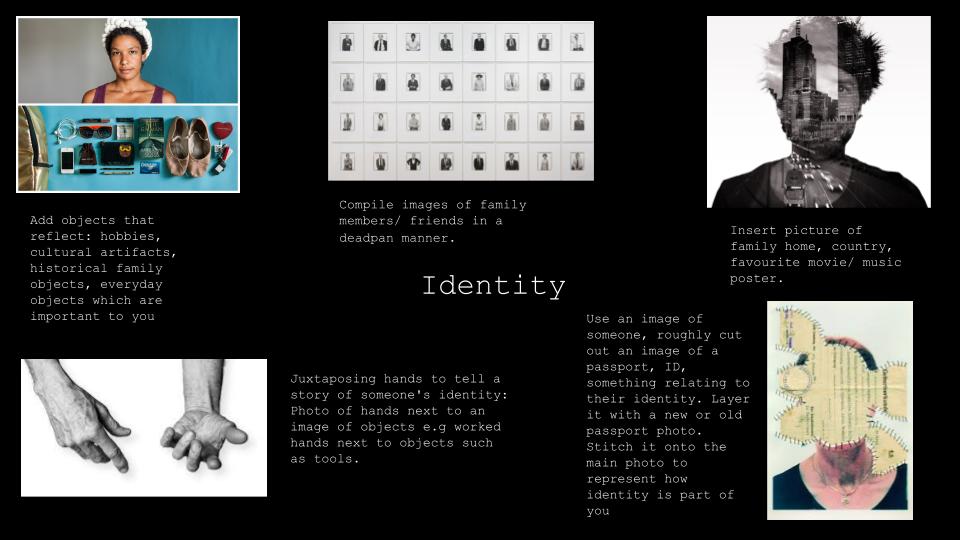
Photographers I am researching:
Annegret Soltau
Forms of Geographical ID:
Map, passport, citizen’s card, birth certificate, book about location, words in that language.
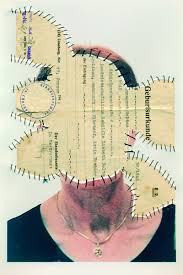
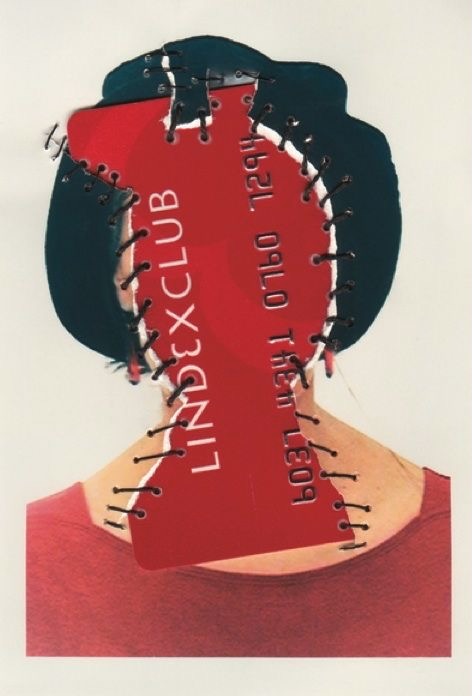
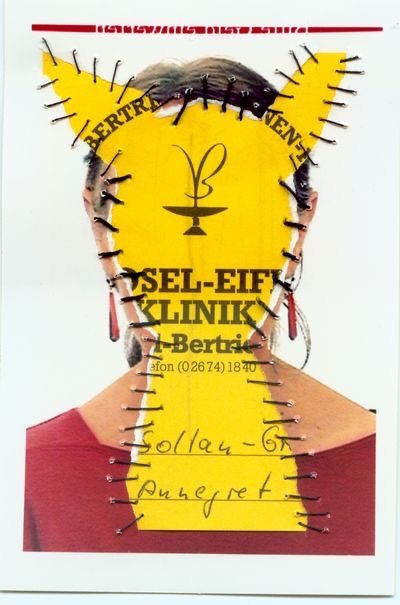
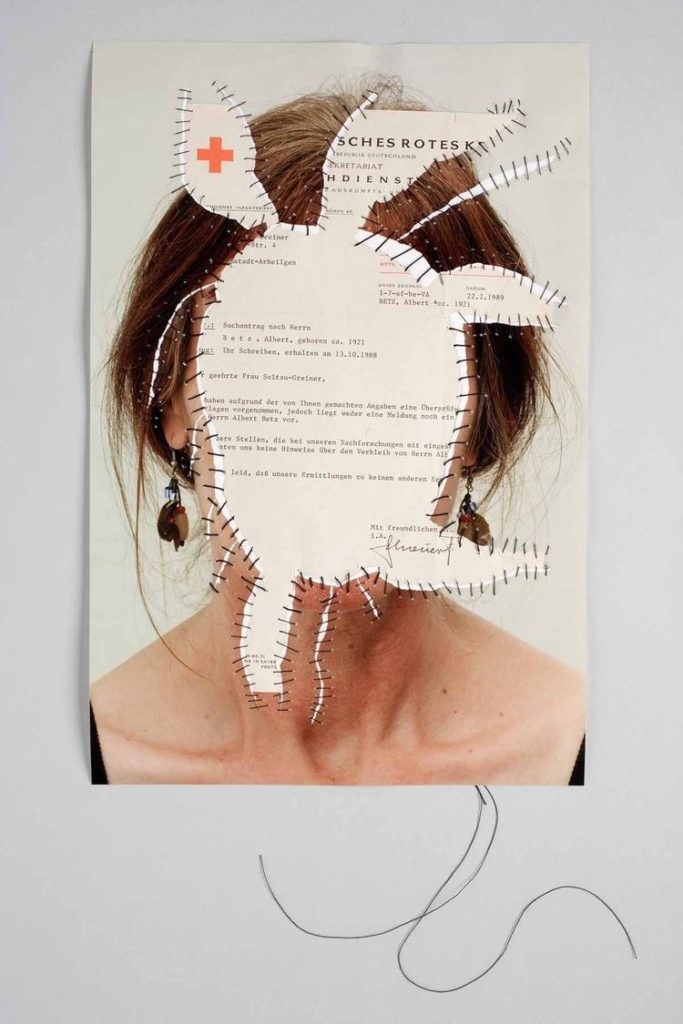
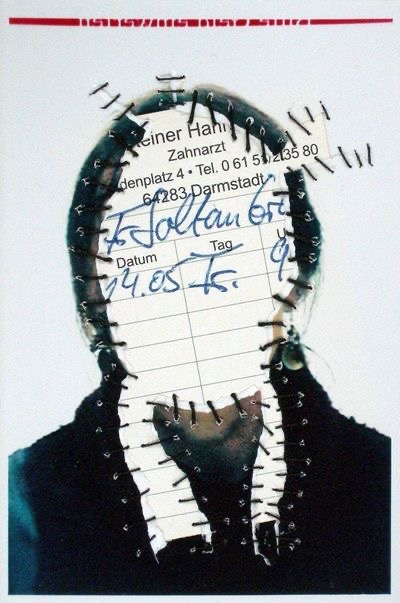
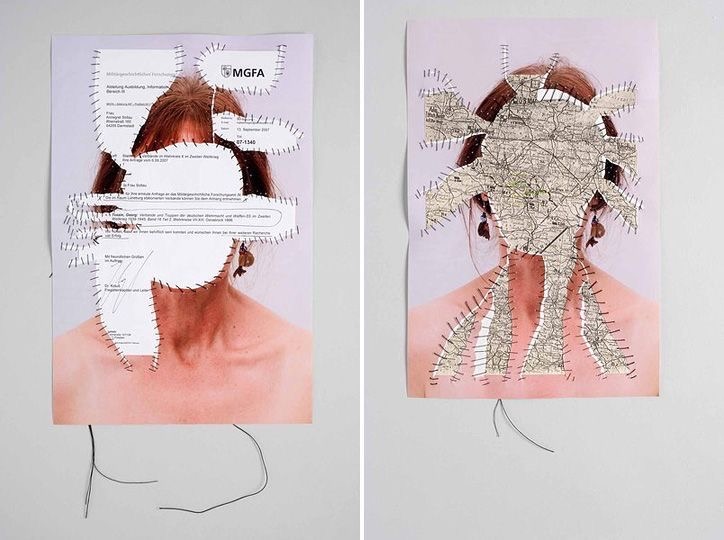
Annegret Soltau is a German visual artist, born in Lüneburg, Germany. Her work marks a fundamental reference point in the art of the 1970s and 1980s. Photomontages of her own body and face sewn over or collaged with black thread are the most well-known works of the German artist.
While the focus of Soltau’s work never ventures far from the female body and its bodily processes, often incorporating images of herself, at the heart of her practice is an inexhaustible search for identity and meaning.
Claud Cahun
Claude Cahun was a French surrealist photographer, sculptor, and writer. Since her “rediscovery” over a decade ago, Claude Cahun has attracted what amounts to a cult following among art historians and critics working from postmodern, feminist, and queer theoretical perspectives. Cahun who moved to the Jersey in 1937 with her stepsister and lover Marcel Moore, was imprisoned for activities in the resistance during the Occupation, and remained here after the war.
In early-20th-century France, when society generally considered women to be women and men to be men, Lucy Schwob decided she would rather be called Claude Cahun. It was her way of protesting gender and sexual norms. She thrived on ambiguity and she chose a name, Claude, that in French could refer to either a man or a woman. She took the last name from her grandmother Mathilda Cahun.
Claude Cahun was a Surrealist photographer whose work explored gender identity and the subconscious mind. The artist’s self-portrait from 1928 epitomizes her attitude and style, as she stares defiantly at the camera in an outfit that looks neither conventionally masculine nor feminine. “Under this mask, another mask,” the artist famously said. “I will never be finished removing all these faces.” In the late 1930s, Moore and Cahun moved to Jersey, an island off the coast of Normandy, where they, disguised as non-Jews, they produced and distributed anti-Nazi propaganda. After being caught, imprisoned, and sentenced to death, they successfully escaped such a fate when Jersey was liberated by allies in 1945. Cahun is considered to be a ground-breaking artist who fully embraced her gender fluidity long before the term came into use. Tragically, she never fully recovered from her maltreatment in prison and passed away on December 8, 1954 in Jersey, United Kingdom. Her work left a huge impression on photography and directly influenced contemporary photographers Cindy Sherman, Gillian Wearing, and Nan Goldin. Today, her works are held in the collections of The Museum of Modern Art in New York, the San Francisco Museum of Modern Art, and the Museum of Fine Arts in Boston, among others.


